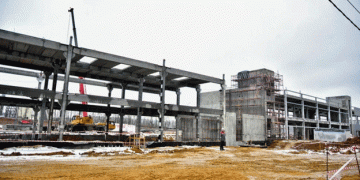This article explores the groundbreaking potential of imaging techniques in agriculture. By leveraging the latest advancements in imaging technology, farmers, agronomists, agricultural engineers, farm owners, and scientists can now capture comprehensive data on plant tissues, enabling more precise monitoring, early detection of diseases, and targeted interventions. Discover how this revolutionary approach can transform the way we cultivate crops and revolutionize agricultural practices.
In recent years, the field of agriculture has witnessed remarkable advancements in imaging technology that are revolutionizing the way we understand and manage crop health. One such breakthrough comes from a cutting-edge imaging technique developed by researchers, as reported in a recent article on Phys.org. This imaging technique allows for the capture of entire plant tissues in high-resolution, providing a wealth of data that can be harnessed to optimize agricultural practices.
Traditionally, monitoring plant health and identifying diseases relied on visual inspection and individual sample analysis, often leading to delayed diagnoses and suboptimal treatment strategies. However, with the advent of this novel imaging technique, farmers and scientists can now obtain a holistic view of plant health, enabling more accurate and timely interventions.
Using the imaging technique, it becomes possible to capture detailed information about the physiological and structural characteristics of plants. By analyzing this data, farmers and agronomists can detect early signs of stress, nutrient deficiencies, and diseases that may not be apparent to the naked eye. The ability to identify such issues at their earliest stages empowers farmers to intervene promptly and effectively, minimizing yield losses and reducing the reliance on agrochemicals.
Moreover, the imaging technique allows for the quantification of plant parameters that were previously challenging to measure accurately. Key attributes such as leaf area, chlorophyll content, and plant growth rates can now be determined with greater precision, providing invaluable insights into crop development and facilitating targeted interventions. By understanding the specific needs of plants at different growth stages, farmers can optimize resource allocation, irrigation strategies, and fertilizer applications, thereby improving overall productivity while minimizing environmental impact.
Beyond its immediate applications in farm management, this imaging technique also holds promise for accelerating research and development in agriculture. Scientists can leverage the comprehensive datasets obtained through this technique to gain deeper insights into plant physiology, identify genetic markers associated with desirable traits, and enhance breeding programs for increased resilience and productivity. This collaboration between farmers, agronomists, agricultural engineers, and scientists paves the way for innovative solutions that address the challenges faced by the agricultural sector.
In conclusion, the advent of advanced imaging techniques in agriculture represents a significant leap forward in crop management and productivity. The ability to capture high-resolution images of entire plant tissues provides a comprehensive understanding of plant health, facilitating early detection of stress, diseases, and nutrient deficiencies. By leveraging this technology, farmers, agronomists, agricultural engineers, farm owners, and scientists can optimize resource allocation, implement targeted interventions, and drive sustainable agricultural practices. The future of agriculture lies in embracing these transformative imaging techniques, unlocking new possibilities for maximizing crop health, yield, and environmental stewardship.
Tags: Agriculture, Imaging Techniques, Crop Health, Precision Farming, Plant Physiology, Early Detection, Sustainable Agriculture, Resource Optimization, Data Analysis, Agricultural Innovation






